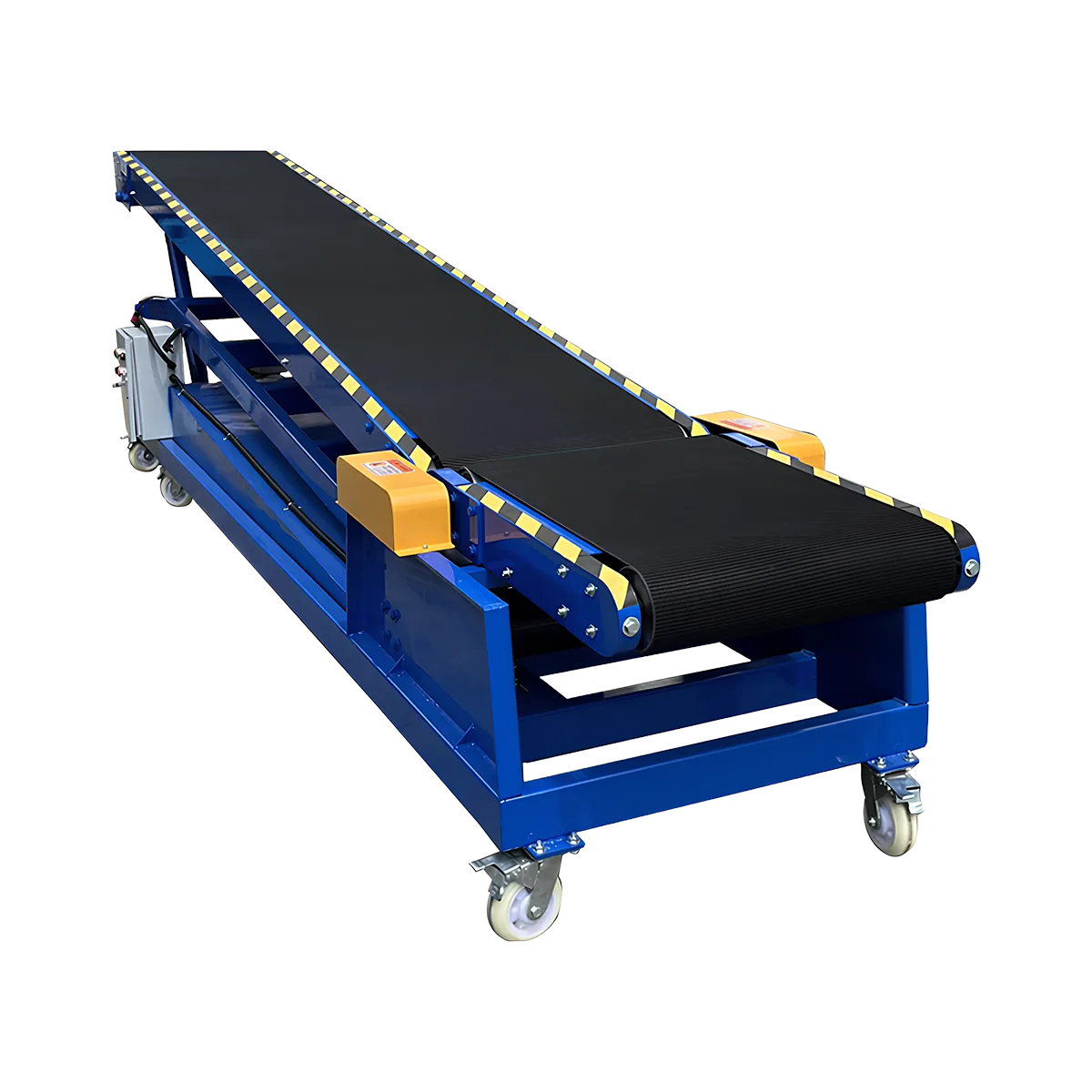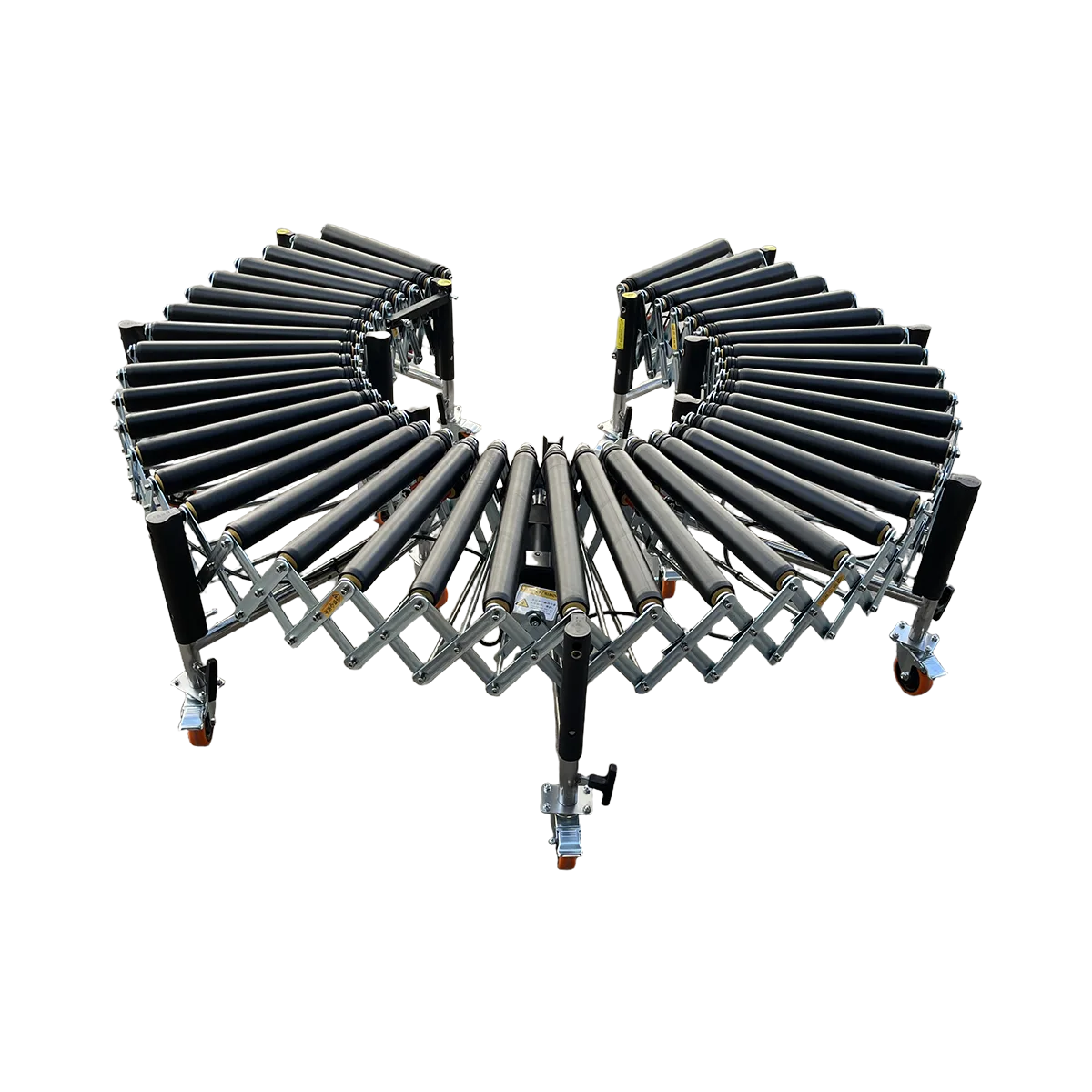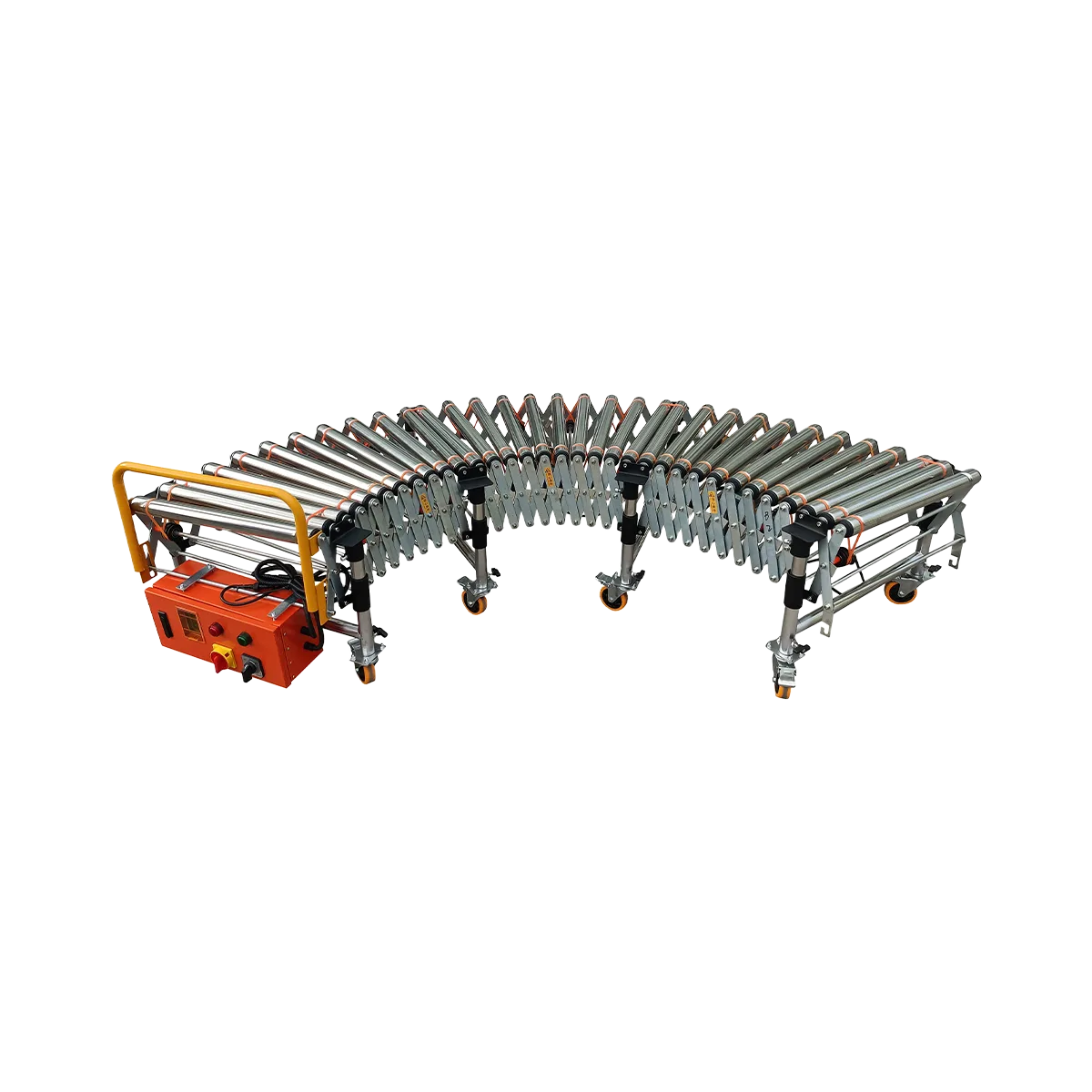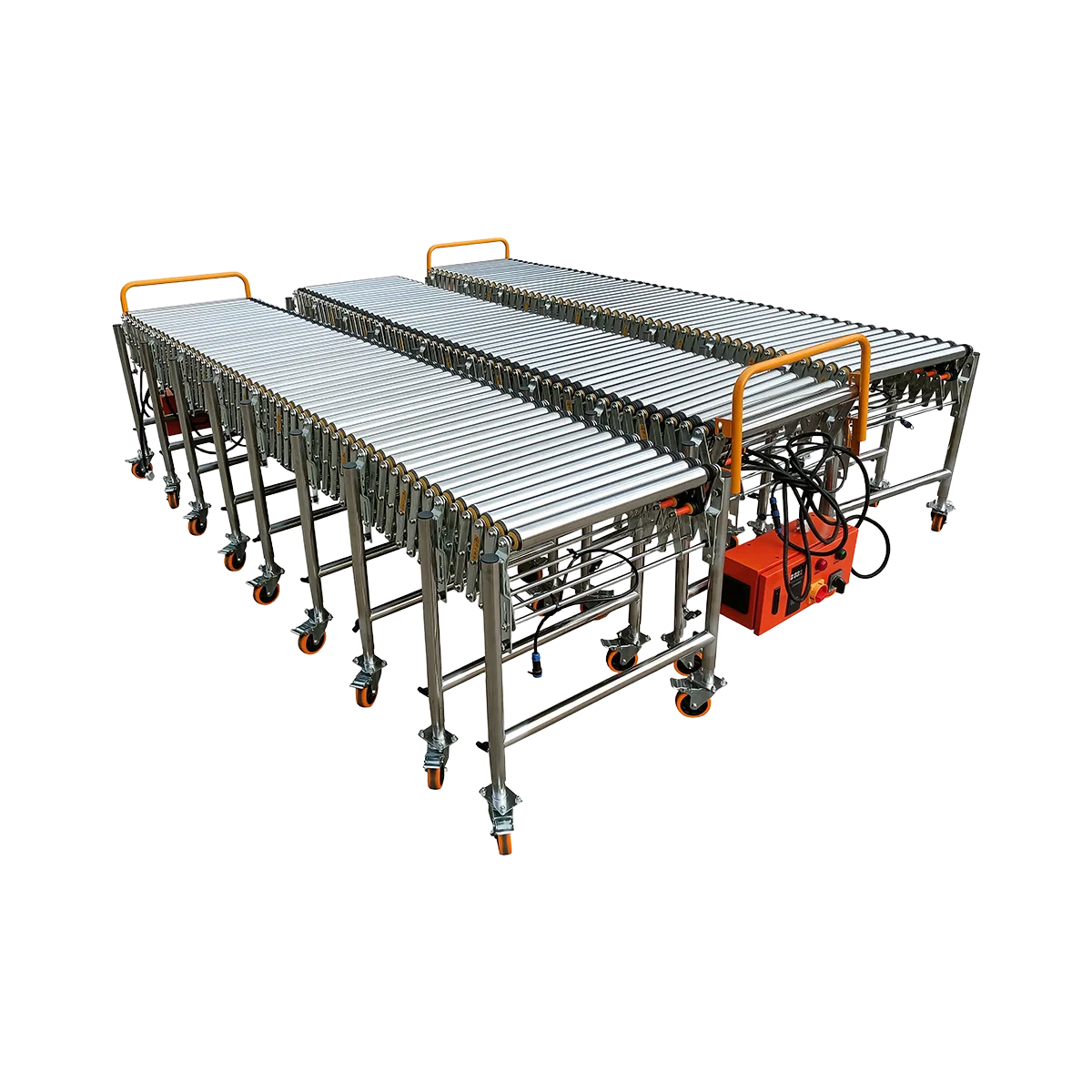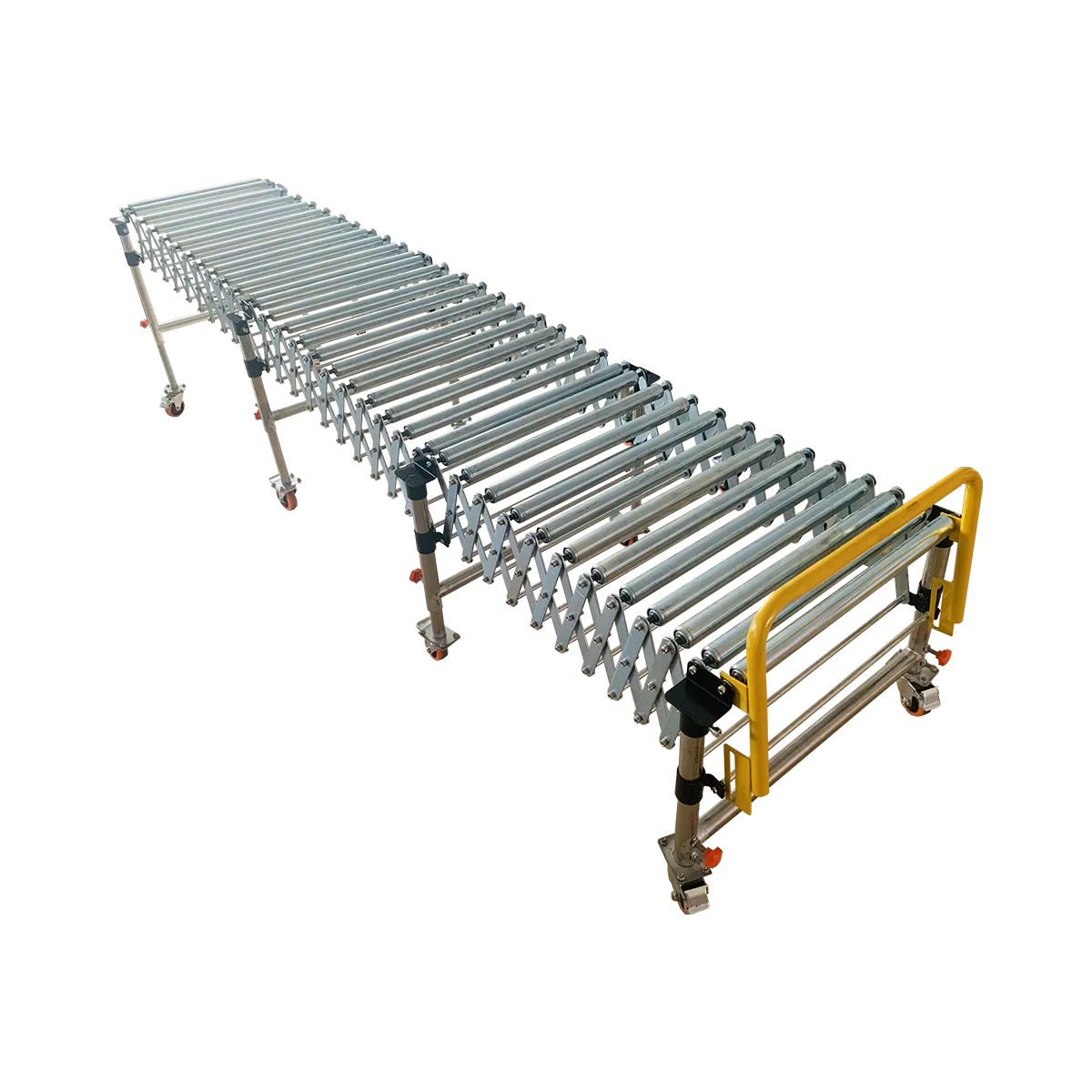What ‘Modular & Extendable’ Really Means for Your Warehouse Future
Discover how modular conveyor systems can transform your warehouse into a future-proof operation with flexible, scalable logistics solutions that grow with your business.
Related Products
-
Hydraulic Conveyor – Medium – 7000 mm LengthCollapsed LengthExtended LengthLoad Capacity
80 kg/m
Applicable GoodsFlat-bottomed Goods
Bagged Goods
-
Powered Rubber Roller Conveyor – Multi-wedge Belt Driven – 1100 mm/SectionCollapsed Length
560 mm
Extended Length1100 mm
Load Capacity120 kg/m
Applicable GoodsFlat-bottomed Goods
Bagged Goods
-
Powered Roller Conveyor – O-shaped Belt Driven – 1500 mm/SectionCollapsed Length
525 mm
Extended Length1500 mm
Load Capacity80 kg/m
Applicable GoodsFlat-bottomed Goods
-
Powered Roller Conveyor – Multi-wedge Belt Driven – 2000 mm/SectionCollapsed Length
700 mm
Extended Length2000 mm
Load Capacity100 kg/m
Applicable GoodsFlat-bottomed Goods
-
Powered Roller Conveyor – Multi-wedge Belt Driven – 3000 mm/SectionCollapsed Length
1050 mm
Extended Length3000 mm
Load Capacity80 kg/m
Applicable GoodsFlat-bottomed Goods
-
Gravity Roller Conveyor – Roller Diameter 38 mm – 1700 mm/SectionCollapsed Length
485 mm
Extended Length1700 mm
Load Capacity50 kg/m
Applicable GoodsFlat-bottomed Goods
Bagged Goods
In the fast-evolving world of warehouse logistics, terms like “modular” and “extendable” are frequently used but often misunderstood. Far from being mere marketing jargon, these concepts represent a fundamental strategic approach to warehouse infrastructure that can dramatically impact your operation’s long-term success. Modular conveyor systems offer the ability to adapt, expand, and reconfigure your material handling setup as your business needs change—without the costly replacement of entire systems.
This adaptability is increasingly crucial in today’s unpredictable business environment, where order volumes, product mixes, and distribution requirements can change rapidly. The traditional approach of installing fixed, single-purpose conveyor systems often results in expensive obsolescence when business needs evolve. By contrast, a modular approach creates a flexible foundation that can be adjusted incrementally, protecting your investment while supporting growth and operational changes.
Building Blocks for Warehouse Success
The core concept behind Naili’s modular approach is remarkably simple yet powerful: conveyors designed as compatible building blocks that can be combined in countless configurations. Much like children’s construction toys that allow for endless creative possibilities, these scalable logistics solutions provide the flexibility to design exactly the system you need—and then redesign it as requirements change.
The Modular Advantage
The building block approach offers several distinct advantages over traditional fixed systems:
- Incremental investment – Start with essential components and add more as budget allows
- Adaptability – Reconfigure the same components to serve different workflows
- Scalability – Expand capacity by adding more sections without replacing existing equipment
- Risk reduction – Test concepts with minimal investment before full-scale implementation
- Maintenance efficiency – Replace individual sections rather than entire systems
Key Components in the Modular Toolkit
Naili’s modular conveyor lineup includes several core components that serve as the foundation of customized systems:
| Component Type | Key Features | Primary Applications |
|---|---|---|
| Hydraulic conveyor | Height adjustment, truck interface | Dock-to-truck transfer |
| Powered roller conveyor | Motorized transport, variable speed | Horizontal movement, inclines |
| Gravity roller conveyor | No power required, economical | Declines, short transfers |
| Gravity skate wheel conveyor | Lightweight, highly extendable (1:5 ratio) | Temporary setups, truck loading |
| Powered rubber roller conveyor | Enhanced grip for soft packages | Handling soft/irregular items |
These components can be mixed and matched to create systems that perfectly address specific operational needs while maintaining the flexibility to evolve over time.
Example System 1: Ground-to-Truck Transfer Solution
One of the most common applications for modular conveyor systems is creating an efficient transfer path from warehouse floor to truck bed. Let’s examine how different conveyor “blocks” combine to form a complete solution.
Block 1: The Hydraulic Conveyor Foundation
The system begins with a hydraulic conveyor that serves as the critical height-adjustment component:
- Function: Bridges the gap between ground level and variable truck bed heights
- Key capabilities:
- Height adjustment range from 700mm to 2400mm (model dependent)
- 5-ton hydraulic lifting capacity
- PVC anti-slip belt for secure package handling
- Heavy-duty casters for repositioning between trucks
The hydraulic unit provides the stable foundation upon which the rest of the system builds, creating a seamless transition from warehouse floor to elevated truck bed height.
Block 2: The Powered Roller Conveyor Connection
Connected to the hydraulic base is a powered roller conveyor section that provides controlled movement along inclined or horizontal paths:
- Function: Provides motorized transport with precise speed control
- Key capabilities:
- Variable speed control (0.3-40 m/min)
- Load capacity of 80-100 kg/m
- Multi-wedge belt drive for reliable power transmission
- Adjustable height support legs for perfect alignment
This powered section ensures packages move smoothly and at controlled speeds, regardless of weight variations or incline angles.
Block 3: The Gravity Roller Extension
The final component extends deep into the truck with a gravity roller conveyor:
- Function: Provides economical extension into the truck cargo area
- Key capabilities:
- Extends from 525mm to 1500mm (50mm roller model)
- Supports up to 50 kg/m
- No power required at the truck end
- Lightweight for easy positioning
This gravity extension allows workers to place packages on the conveyor from anywhere in the truck without carrying them to the door, dramatically improving efficiency and reducing strain.
Together, these three distinct “building blocks” create a seamless transfer path that can be adjusted for different truck heights, extended to various depths, and reconfigured as needed—all while maintaining perfect compatibility between sections.
Example System 2: Extended Warehouse Transfer Line
For longer distance movement within a warehouse, a different combination of modules creates an efficient solution. A 50-meter transfer line might consist of:
The Power of Connected Sections
A series of connected powered roller conveyor sections forms the backbone of this system:
- Multiple 3-meter sections – Each extendable from 1050mm to 3000mm
- Unified control system – Single control panel managing multiple sections
- Consistent speed – Synchronized operation across all sections
- Flexible path – Straight runs or gentle curves as needed
Enhancing the Basic Line
The basic powered line can be enhanced with additional modules:
- Gravity declines – Energy-efficient downhill runs without power
- Accumulation zones – Areas where packages can gather without stopping the line
- Transfer points – Intersections where packages can be directed to different paths
- Workstations – Ergonomic access points for processing or inspection
The beauty of this approach is that each section remains an independent module that can be repositioned, replaced, or repurposed as needed. If a section wears out or is damaged, it can be replaced without disrupting the entire line. If the warehouse layout changes, the same components can be reconfigured to create an entirely new path.
The ‘Future-Proof’ Advantage: Growing With Your Business
Perhaps the most compelling aspect of extendable conveyor benefits is the ability to start small and grow incrementally—creating a truly future-proof warehouse infrastructure.
Phase 1: Starting Simple
Many operations begin with basic needs that can be met with minimal investment:
- A simple 10-meter gravity line with 5-6 connected sections
- Manual operation requiring minimal infrastructure
- Focused on a single critical transfer point
- Low initial investment with immediate productivity gains
This entry-level system delivers immediate benefits while establishing the foundation for future expansion.
Phase 2: Adding Powered Capability
As volume increases or labor costs rise, the system can evolve with minimal disruption:
- Add powered sections to reduce manual effort
- Integrate with existing gravity sections
- Extend the line to serve additional areas
- Implement speed controls for better flow management
This incremental approach allows for investment aligned with business growth, rather than large upfront capital expenditures.
Phase 3: Complete Reconfiguration
When major changes occur—such as warehouse relocation or significant workflow redesign—the modular system truly proves its value:
- Disassemble and reconfigure the same components
- Create entirely new workflows with familiar equipment
- Add new module types to address emerging needs
- Preserve the majority of your original investment
This adaptability represents the essence of what “modular and extendable” truly means for your warehouse future—the ability to evolve without starting over.
Practical Considerations When Implementing Modular Systems
While the benefits of modular systems are compelling, successful implementation requires thoughtful planning:
Compatibility Planning
When connecting different conveyors, consider these factors:
- Height matching – Ensure smooth transitions between different conveyor types
- Speed coordination – Match speeds between powered sections to prevent bottlenecks
- Load capacity alignment – The system is only as strong as its weakest link
- Control integration – Consider how multiple powered sections will be controlled
Future-Focused Design
Even your initial implementation should consider future possibilities:
- Leave space for potential extensions
- Install electrical capacity for additional powered sections
- Consider modular control systems that can expand
- Document your system thoroughly for future reconfiguration
Maintenance Strategy
A modular approach changes how maintenance should be approached:
- Keep critical spare sections on hand for quick replacement
- Develop expertise in reconfiguration among maintenance staff
- Establish regular inspection routines for connection points
- Consider preventive replacement of high-wear sections
Conclusion: Investing in Possibilities, Not Just Equipment
The true value of modular and extendable conveyor systems lies not just in what they can do today, but in what they enable tomorrow. Rather than purchasing a conveyor system designed solely for current needs, forward-thinking warehouse managers are investing in flexible platforms that can evolve alongside their business.
This approach transforms material handling equipment from a fixed cost center with inevitable obsolescence into a dynamic asset that can be continually optimized. In an era where the only constant is change, the ability to adapt quickly and cost-effectively represents a significant competitive advantage.
By embracing truly modular conveyor solutions, you’re not just solving today’s logistics challenges—you’re building a flexible foundation for whatever challenges and opportunities tomorrow may bring. The initial investment might be similar to traditional fixed systems, but the long-term value is dramatically enhanced through adaptability, scalability, and resilience to change.
Frequently Asked Questions
How do I ensure different conveyor sections will work together properly?
Naili conveyor sections are designed with standardized heights and connection points to ensure compatibility between different types. The support legs on most models are height-adjustable (typically in ranges like 450-680mm or 550-820mm), allowing fine-tuning to create perfect transitions between sections.
Can I add powered sections to an existing gravity conveyor system?
Yes, powered roller conveyor sections can be integrated with existing gravity sections to create hybrid systems. This is a common upgrade path that allows operations to start with economical gravity systems and add powered sections as volumes increase or labor costs rise.
What is the maximum length I can create with connected conveyor sections?
There is no theoretical maximum length for connected systems. Practically, powered systems may require additional power supply points for very long runs. Gravity systems can extend indefinitely but require proper decline angles to maintain flow. Most warehouse applications successfully implement connected systems ranging from 10 to 100 meters.
How difficult is it to reconfigure a modular conveyor system?
Reconfiguration complexity depends on the system size but is generally straightforward. Most sections can be disconnected and repositioned by two workers using basic tools. Powered sections require reconnection of electrical controls. A typical 20-meter system can usually be reconfigured in less than a day.
What is the expected lifespan of a modular conveyor system?
Individual conveyor sections typically last 5-10 years with proper maintenance. However, the modular nature means the overall system can last much longer, as individual sections can be replaced as they wear out. Many operations maintain functional systems for 15+ years through periodic component replacement and upgrades.
Table of Contents
Recent Posts
Discover how to select the perfect conveyor width for your warehouse operations. Our expert guide helps you match box sizes to conveyor dimensions for optimal efficiency and fewer jams.
Discover effective outdoor conveyor solutions for connecting warehouse to truck across open yards. Our guide to all-weather yard logistics will transform your loading efficiency.
Discover the ideal van loading conveyor solution for Sprinter, Transit and other delivery vehicles. Our Micro Hydraulic Conveyor system boosts efficiency while saving labor costs.

